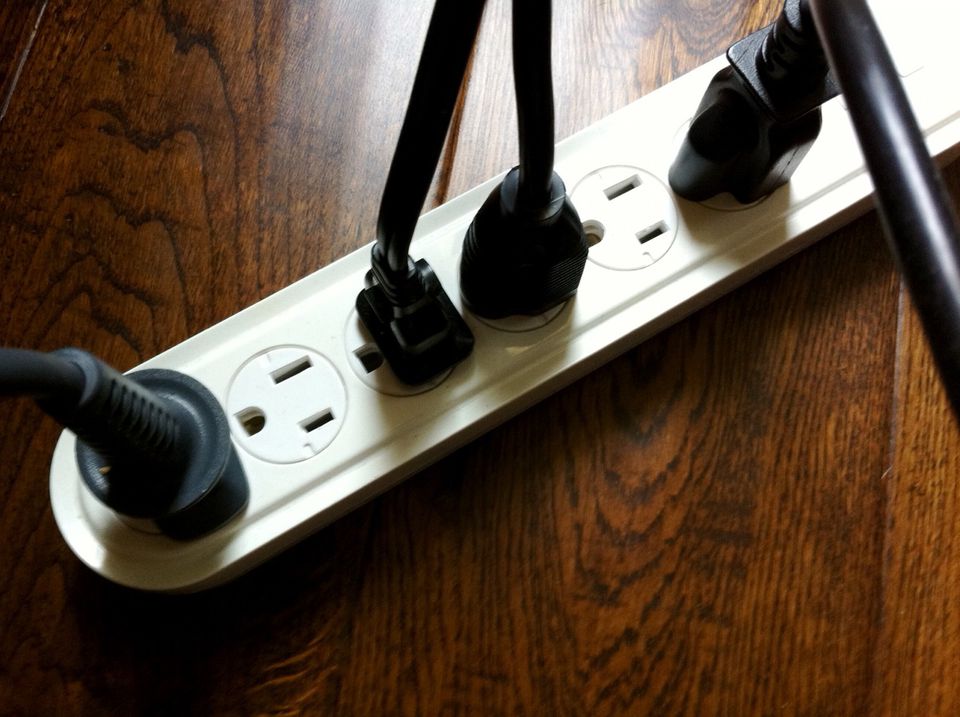|
|

|
10 Ways to Reduce Your Family's Carbon Footprint BY ERYN GABLE Updated 10/29/16
The choices we make in our everyday lives have a profound effect on our environment, but there are simple actions you can take to reduce that impact. Here's a list of 10 ways to reduce your family's carbon footprint to get you started:
01 of 10 Make your home more energy-efficient.

Conduct an energy audit to determine how you can improve your home's energy efficiency. Use caulk or weather stripping to reduce air leaks around windows and doors. Insulate your attic, water heater, hot water pipes and furnace ducts if they're not already. Change your air filters regularly if you have a forced-air furnace and opt for light bulbs that use less electricity, such as compact fluorescent bulbs.
02 of 10 Ditch your old thermostat.

If you don't have a programmable thermostat already, a new one is easy to install. Adjusting your thermostat by 10 to 15 degrees when you're not home or you're sleeping can cut your energy use by as much as 15%, according to the Energy Department. You can also save energy by adjusting your thermostat by 1 or 2 degrees when you're home, using thermal window coverings and turning off your heating and cooling systems on nice days and opening your windows instead.
03 of 10 Makeover your laundry routine.

Washing your clothes in cold water eliminates 90% of a typical washing machine's electricity usage, according to the Environmental Protection Agency. You can also save energy and water by only washing full loads or reducing water levels for smaller loads. When it comes to drying, opt for dryer balls to speed up your drying time, or skip the dryer altogether and hang your clothes to dry.
04 of 10 Unplug appliances that aren't being used.

Many common household items, from computers to coffee makers, operate in a standby mode that uses electricity even when they're not in use, so unplug what you don't need. Keep electronics like computers and TVs plugged into power strips and turn everything off with one flick of a switch.
05 of 10 Use native plants in your landscaping.

The Environmental Protection Agency reports that outside water accounts for as much as 70% of all water use in some parts of the country, and as much as half of that water may be wasted due to evaporation, wind or runoff. Reduce your water usage and waste by choosing native plants that are well-suited to local growing conditions.
06 of 10 Buy local, organic and in-season foods.

The products in your local supermarket may have originated from countries all over the globe, and all those miles on trucks, trains and planes can quickly add up to a big impact on the environment. Pay attention to the labels on the foods you buy and opt for ones that are locally or domestically produced. Or better yet, grow your own food.
07 of 10 Drink tap water.

Packaging and transporting bottled water requires considerably more energy than tap water, which is delivered right to your faucet. Additionally, there's no guarantee that bottled water is any safer or better than tap water. A four-year review of the bottled water industry by the Natural Resources Defense Council found that about 25% of bottled water is actually tap water in a bottle, sometimes without further treatment. If you're concerned about contaminants in your water, use a filtration pitcher or a filter that connects to your faucet, refrigerator or plumbing.
08 of 10 Reduce, reuse and recycle.

Before buying something new, consider whether you really need it and whether you can buy it used instead. You can find many used items at local yard sales, thrift shops, and consignment stores, as well as online. When you're done with a product, choose to recycle, donate, sell or compost it, if possible.
09 of 10 Drive less.

Rather than making multiple trips, combine your errands to save gas and time. And before you hop in your car, consider using public transportation, ride-sharing, walking or biking instead. When you do drive, follow these tips to save on fuel and reduce your carbon emissions.
10 of 10 Fly less.

Airplanes produce the same kind of carbon emissions as cars and trucks, so you can reduce your carbon footprint by limiting your air time. Opt for a staycation rather than flying to a far-flung destination and limit your business trips by considering video conferencing instead. And when you do fly, choose a direct flight where possible.
Source: https://www.thespruce.com/ways-t ... n-footprint-1707189
|
|
 Cultivation in the Second Home of Lifechanyuan: The Awakening of Independence an
Cultivation in the Second Home of Lifechanyuan: The Awakening of Independence an
 Six Reports on Lifechanyuan and the Second Home by Massimo Introvigne, Editor of
Six Reports on Lifechanyuan and the Second Home by Massimo Introvigne, Editor of
 Thank You, Mr. Massimo Introvigne
Xuefeng
October 14, 2025
Dear Mr. Massimo In
Thank You, Mr. Massimo Introvigne
Xuefeng
October 14, 2025
Dear Mr. Massimo In
 Lifechanyuan: A University for Soul Cultivators
Written by Jiejing Celestial|N
Lifechanyuan: A University for Soul Cultivators
Written by Jiejing Celestial|N
 Massimo Introvigne, Editor of Bitter Winter, Published the Sixth Article about L
Massimo Introvigne, Editor of Bitter Winter, Published the Sixth Article about L
 Massimo Introvigne, Editor of Bitter Winter, Published the Fifth Article about L
Massimo Introvigne, Editor of Bitter Winter, Published the Fifth Article about L


 Post time 2017-11-09 13:16:18
Post time 2017-11-09 13:16:18












